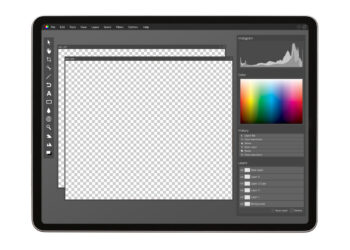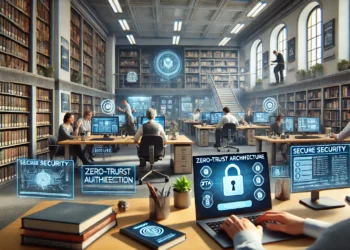 I’m a fan of PowerPoint. I’ve used it for years, and I’m pretty adept with it. It can be pretty effective if used properly, and I happily employ it quite often when I give talks. I’ve even invented things for it, like the method for making automated slides and slidesets for journal articles, something a lot of journals subsequently adopted. So I perk up when a wave of PowerPoint critics begins to stomp around the infosphere, which they’ve been doing again of late.
I’m a fan of PowerPoint. I’ve used it for years, and I’m pretty adept with it. It can be pretty effective if used properly, and I happily employ it quite often when I give talks. I’ve even invented things for it, like the method for making automated slides and slidesets for journal articles, something a lot of journals subsequently adopted. So I perk up when a wave of PowerPoint critics begins to stomp around the infosphere, which they’ve been doing again of late.
PowerPoint is the problem, these critics contend. It leads to poor presentations full of slides that are boring, too reliant on text and bulleted lists, and predictably dull.
But there’s an inescapable truth behind the attacks on PowerPoint — those criticizing it are truly shooting the messenger, because what they’re complaining about is that the message is boring, trite, too text-heavy, and not geared to audience engagement. That’s not PowerPoint’s fault. That’s the presenter’s fault.
Good speakers work hard to make PowerPoints that avoid those pitfalls. They rarely use lists. A few years ago, in an attempt to be more “edgy,” I even went through a period during which I worked hard to make my PowerPoints into a well-timed proxy for skeptical audience members, with slides popping up which would insult me behind my back, clearly taking the side of the audience. It worked pretty well, but took a lot of practice.
Recently, Jeff Bezos was praised in Forbes for his astute use of PowerPoint. Why? He used charts that meant something, illustrations that accentuated his talk, useful pictures, solid design theory, and very little text. His text was what he said, not what was on the slides.
As Carmine Gallo writes in the story from Forbes:
The typical PowerPoint slide has forty words. It was nearly impossible to find forty words on ten slides of the Amazon presentation. . . . Image-rich presentations work effectively because pictures appeal to the right hemisphere of the brain—the emotional side. You can have great ideas backed up by data and logic, but if you don’t connect with people emotionally, it doesn’t matter.
The reservations that make presenters dependent on bulleted lists are often difficult to shake. Public speaking creates anxiety for many professionals, so there’s a tendency to seek a comfort zone. PowerPoint can cater to this, and that’s part of why it’s criticized. But any tool should try to make you comfortable using it. A high level of usability shouldn’t be a pathway to criticism.
The real challenge for presenters is being a good presenter. That transformation can be difficult, take years, and require a lot of adaptation. If you’re not a natural ham, it can be tough. People who are hams generally see the stage as a place of comfort, at least to some degree. It may take them a few presentations to “get it,” but they have a predilection for the footlights. The road to competence is easier.
People do become stranded in the zone of PowerPoint perfidy — they don’t present often enough, don’t push themselves beyond writing out their presentations and into theatrically presenting their ideas, or don’t have either a trusted source of feedback or the instinctual sense of bombing that keeps them pushing forward. And that’s OK. Some people might always be uncomfortable giving talks or presentations. There are worse things in life. But don’t blame PowerPoint.
And don’t think Prezi is going to change things.
Prezi is sometimes brought up as the whiz-bang alternative to PowerPoint, the palette mode praised as if it’s inviting you over from the text-heavy temptations of PowerPoint into the graphical fairyland of Prezi. I’ve used Prezi. It has some interesting elements, but it has some severe limitations, as well. Scott Berkun recently wrote about its problems, and I agree with his assessment:
Prezi bills itself on the ability to ZOOM, to MOVE, to TRANSITION. All the most distracting elements for would-be speakers, elements that distract them away from the quality thinking required to speak well. Instead of thinking “I’m so proud of how I worked hard to explain this important idea so that my audience can understand it” they think “Here comes my favorite transition! Look at how the entire screen is going to rotate! WOOT!”. I can see how, in the hands of a skilled communicator, Prezi makes some things easier to do, but a skilled communicator would do just fine with any tool. . . . The people most drawn to use Prezi are those who are more enchanted by the pretense of style, rather than substance.
There may be an ultimate truth within the criticisms of the tools we use to communicate, especially sophisticated ones like PowerPoint and Prezi — if you attend a talk, and the slides dominate, are boring, invite you to zone out, or leave you unmoved, don’t blame the software, blame the presenter. Don’t blame PowerPoint or Prezi. If you do, you are just shooting the messenger.
Discussion
14 Thoughts on "Attacking PowerPoint and Prezi — Is This Just Shooting the Messenger?"
My kvetch with PowerPoint is not so much it’s use in presentations as its use as the document of reference. Rather than composing minutes of a meeting, people just save the PP. Text consists of complete sentences with defined meaning. What does a PowerPoint bullet mean? “* Big Problem”. Does the speaker just want to call attention to the existence of a the “big problem”? Did they propose a solution? We’re they saying it was not actually a problem? PowerPoint bullets are tantalizingly slippery allowing the presenter after the fact to redefine their meaning however might be convenient at the time. “A bullet means just what I choose it to mean — neither more nor less.”
Have you seen PowerMessage? It is an add-in to PowerPoint that helps you build presentations that are more weblike….allowing you to navigate to any part of your content and drill into it as necessary. It is very intuitive and helpful. It is from a start-up called PowerMessage Systems and was invented by someone who comes from the world of “Big 4” consulting firms. Well worth checking it out at http://www.PowerMessagePro.com
I tried the software and it’s reallypretty cool. Makes presentations feel like websites.
I tend to agree. PowerPoint is a very powerful tool but like any tool it can be abused. If you follow some fairly simple rules, and there are plenty of training module on how to give good presentations, presentation slides can be very useful. Otherwise they just detract from a talk.
The key concept is that people process information serially. They can’t do two cognitively complex things at the same time. If you have a busy, complex slide such as one full of text or a complex graph, they can’t read and make sense of it and pay attention to what you are saying. Either the text/graph or what you are saying gets missed. It’s very frustrating for the person listening and detracts from your talk. Simple things like taking the time to walk through and explain a graph before talking about its implications makes all the difference in the world.
While I agree that much of the ills of PowerPoint come from poor preparation and a poor understanding of presentation and design (Really? Yellow text on a white background? Really?), I think it’s important not to let PowerPoint off the hook so readily.
Have you read Edward Tufte’s extended piece on PowerPoint? It’s available for purchase here (http://www.edwardtufte.com/tufte/powerpoint), and summarized as:
…slideware often reduces the analytical quality of presentations. In particular, the popular PowerPoint templates (ready-made designs) usually weaken verbal and spatial reasoning, and almost always corrupt statistical analysis…
There’s a really nice excerpt from the document freely available online that discusses the failings of PowerPoint presentations in the Columbia Space Shuttle disaster, and how they better supported bureaucratic hierarchies rather than factual data:
http://www.edwardtufte.com/bboard/q-and-a-fetch-msg?msg_id=0001yB&topic_id=1
I was going to point to this same article excerpt.
Saying that a skilled user can overcome a product’s inherent flaws isn’t really a good defense of the product.
The thing that strikes me about the Tufte article is that the problems he describes about defective organizational communication in the Columbia disaster are at root the same problems that existed pre–Power Point that caused the Challenger disaster.
This makes me wonder if Power Point is really the cause of the problem or if the typical ineffective use of Power Point is actually a result of already defective organizational communication styles.
PowerPoint makes it possible to make good presentations. But it also makes it really easy to make bad presentations. The tools and templates encourage information light word-dumps. If you open up a new document and hit new slide, PowerPoint puts a bullet list at your fingertips. Many people who are inexperienced at giving presentations will follow the easiest path in the software, assuming that the software knows best.
Folks have been following that easiest path for so long that in my organization, the presentation has been taken out of the PowerPoint. “Decks” are now used as information distribution, without any intention of a person presenting them. This limits the success of any concept too complex for bullet points.
If using PowerPoint to make a good presentation means you need to start by ignoring most of the tools it offers by default, I think that points to a problem in the tool.
I completely agree with your post. I think some bad presenters (and they are legion) see Prezi as cool tool which reflect how hip they are (‘Guys, I’m so cool that I don’t use Microsoft.’ To which I respond, ‘Um, what OS is your software running on, again? Is it XP / Windows 7, p’raps?’). They also think Prezi makes their presentations more interesting. Trouble is, they don’t. They’re still boring – except they bore whilst rotating and panning in and out. Whoopee-doo.
One of my favourite lecturers at uni used to use flip charts and a humble, battered marker pen in her presentations – she’d draw (basic) tables in front of us etc. What she had to say and how she said it put the message across. So good was she that I can still recall a lot of what she said about Australian history – and I now work in a medical library! Now I’m not advocating we ditch PP and turn into luddites like my old lecturer – but it’s an example of how good preparation and a good presentation style get your message across. Just using Prezi won’t so this. It’s not a silver bullet. But some presenters are so bad they need to be shot! 😉
I agree with you powerpoint or any presentations application will only deliver when you know how to. bullets points have their place but people are overusing it.
Some thoughts:
– the presentation is only as good as the presentor
– the slides or prezi should never compete with what is said, but support it
– you can misuse prezi just as well (or maybe better) than powerpoint
– the great thing about prezi is not the blingbling effects, but the possibility to visualize in three dimensions, without losing reference.
I think good PPs and good Prezis share quite some features:
– support the message
– use visualization to communicate massive amount of (implicit) information
– dont go blingbling
I think it is all about balance. Know how the tools can contribute to what you are trying to say; know when the tool is a distraction from the message.
Power Point makes it very easy to prepare clear, clean slides with images, animation and embedded functionality (video, interactive data, etc). This is not the same thing as preparing what you need to say.
When ease of preparing slides makes you skip the work of preparing your message, you have a bad presentation. Period. Good slides don’t substitute for good ideas.
But, on the flip side, you can obscure an excellent message with bad slides.
Surprised no one mentioned Peter Norvig’s PPT of the Gettysburg address:
http://www.norvig.com/Gettysburg/sld001.htm
I think conference organizers deserve some blame. There is a trend to upload PDFs after a conference. So Authors try to make presentation files self contained, and understandable by themselves. So a really good presentation file, say one by Steve Jobs, would make no sense as there is minimal text.
I believe that there should be two documents. One (e.g. PowerPoint) as a “visual aid” to the presenter, and another, self contained file with more description. In my opinion the “visual aid” should never be distributed outside the conference, at least not without an accompanying audio.



